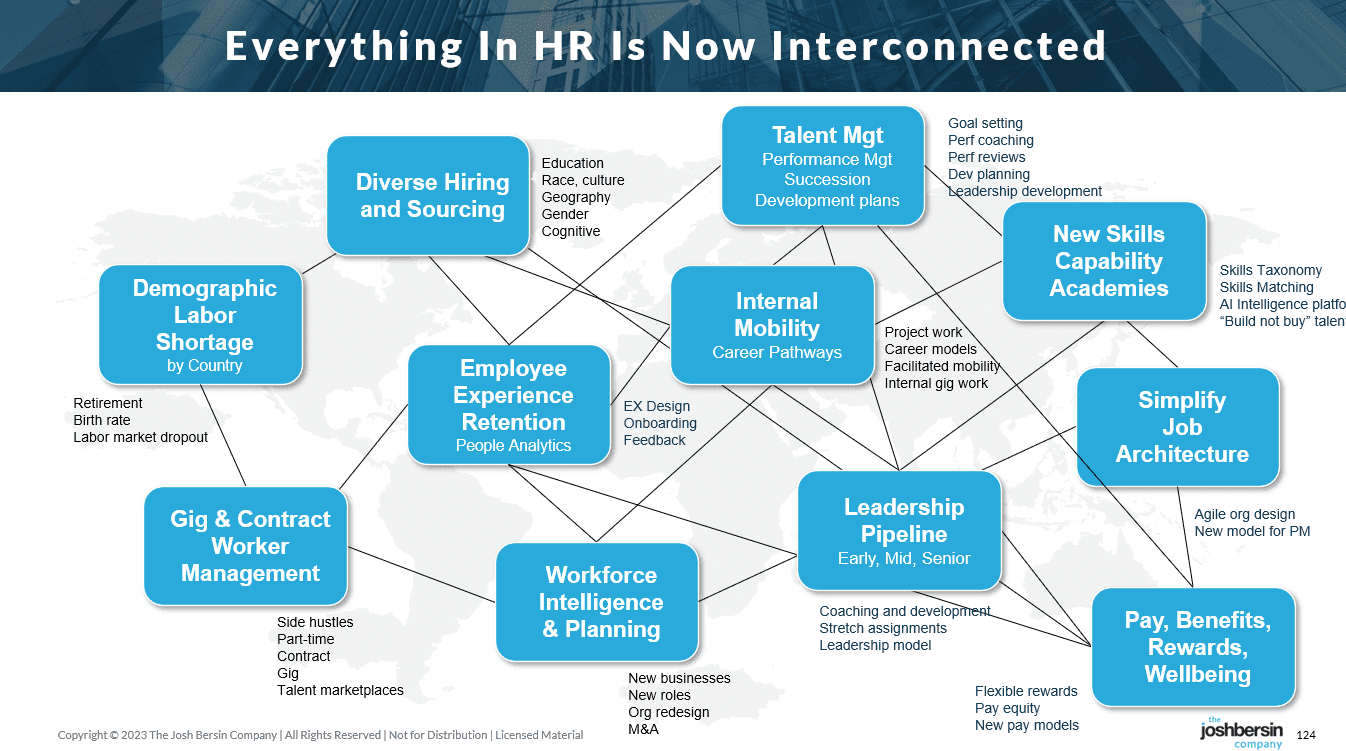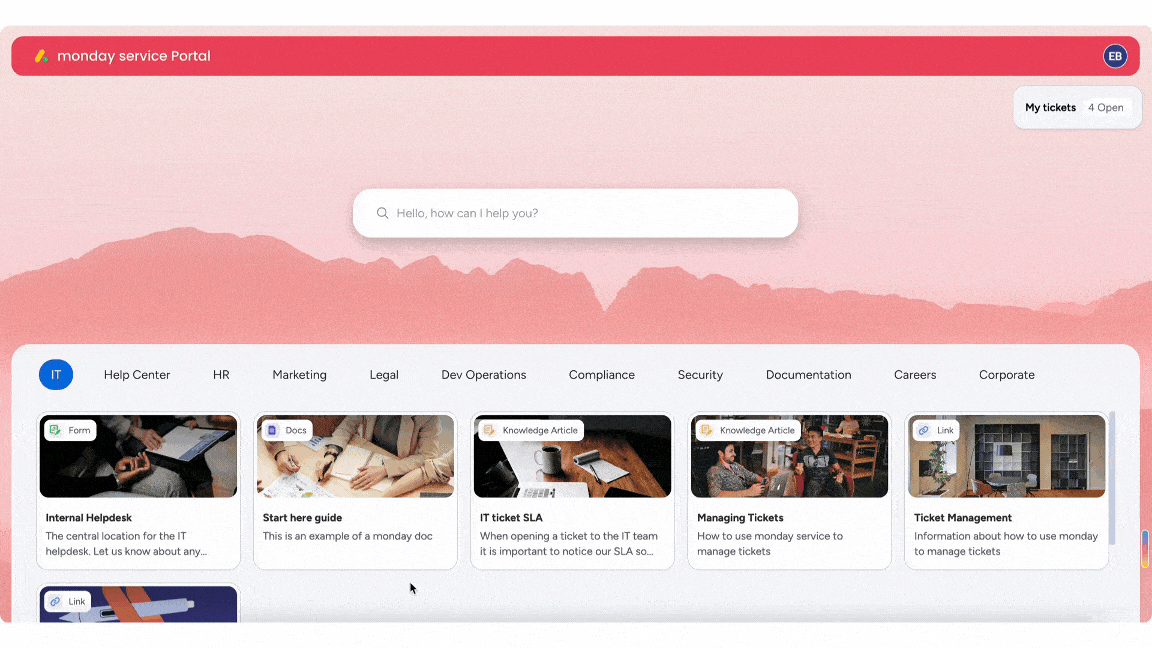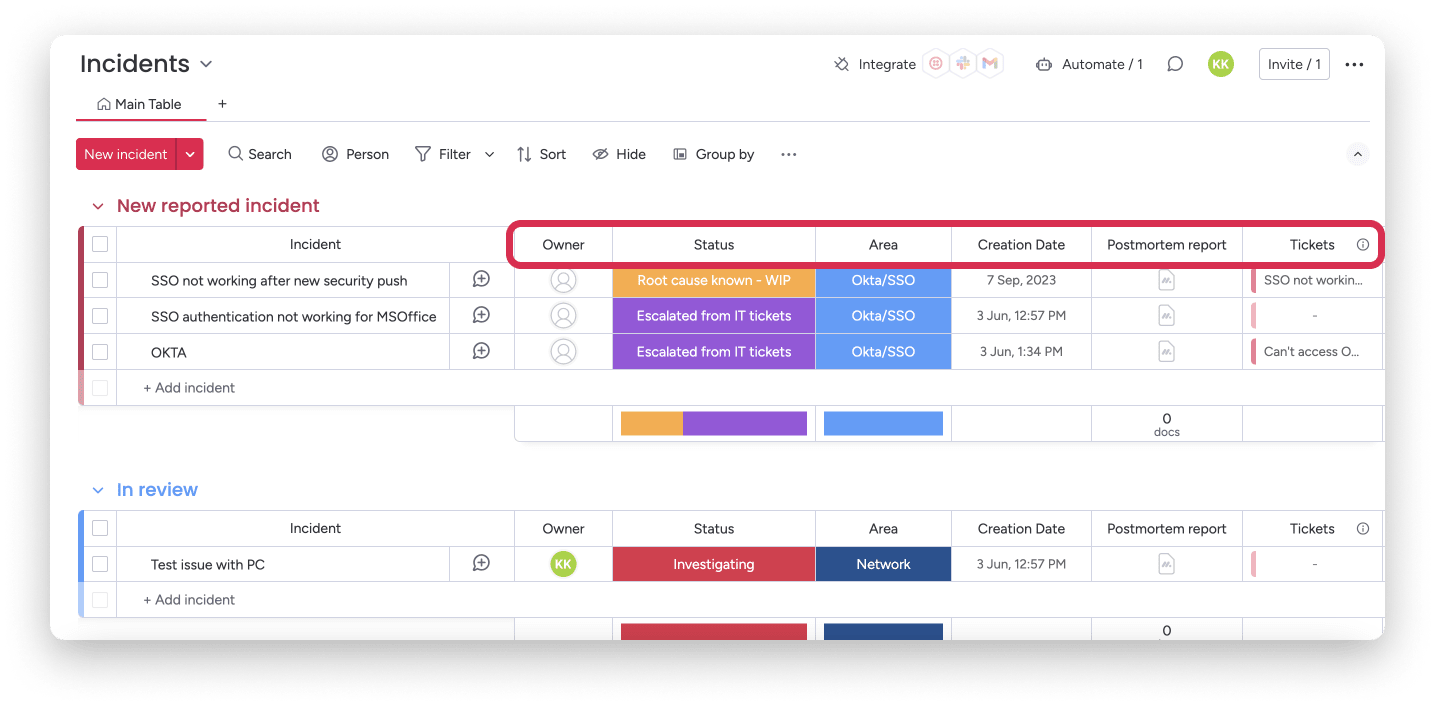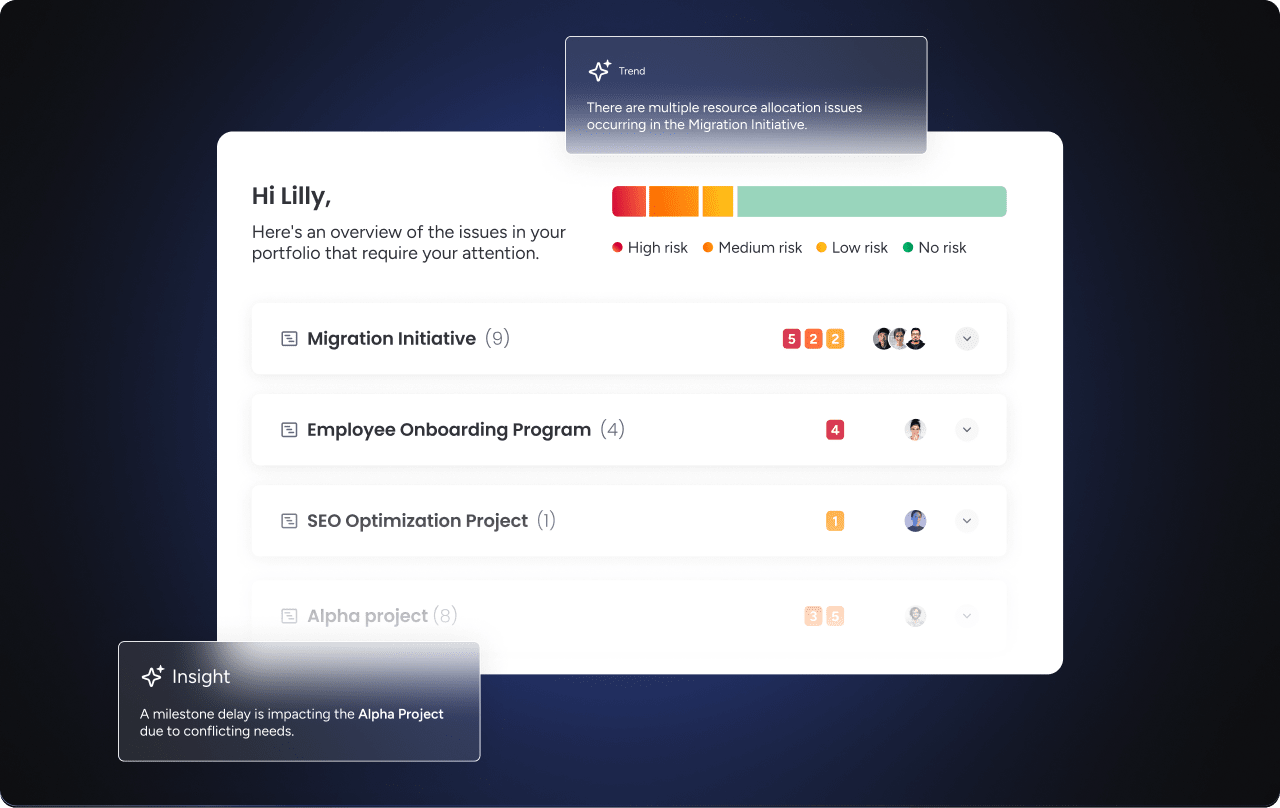Employees mainly contact HR when they need something. They get in touch to update their address or query a tax calculation that’s thrown their latest paycheck out of whack. Internally, managers tap HR for advice on an underperforming team member or to notify them about a resignation. HR provides an essential service for the business — but tackling an array of constant requests (each more urgent and important than the last) feels a lot like firefighting.
As an alternative, this guide explores the concept of replacing a manual approach with a sleek HR service management (HRSM) system that runs like your IT service operations. We’ll outline the benefits of using a more defined approach, best practices for implementation, and how you can build and run HRSM with monday service.
Try monday serviceKey takeaways
- HR service management brings order to high-volume, high-stakes HR requests, replacing fragmented processes with scalable, structured support.
- Automation, visibility, and integration across departments are crucial for delivering consistent HR services, particularly as teams expand or operate across multiple regions.
- A strong HRSM model improves employee experience, compliance, and strategic decision-making.
- Success relies on more than software. HR leaders need to audit their workflows, define outcome-driven goals, and commit to continuous service improvement.
- monday service is purpose-built for modern HR teams, combining automation, digital workers, cross-functional workflows, and service analytics in one intuitive platform.
What is HR service management, and how does it work?
HR service management applies the same structured, scalable principles used in IT service management to the world of HR. Instead of treating employee support as a series of isolated tasks, HRSM approaches it as an end-to-end service that’s defined, trackable, and delivered consistently across the business.
HR service management typically works by:
- Automating HR workflows such as onboarding, approvals, and provisioning
- Connecting HR cross-departmentally with legal, IT, and finance to remove bottlenecks
- Providing help desks and knowledge bases for managing employee requests
- Centralizing data and services across teams, locations, or business units
- Offering real-time visibility through dashboards and reporting tools
What are the main benefits of HR service management?
As more HR teams shift to service-based models, the impact on both day-to-day operations and long-term planning is clear. Here are the specific benefits you’ll gain from an investment in HR service management.
Increasing time efficiency
When HR teams adopt an HRSM model, one of the first benefits they’ll notice is extra hours in their time bank. Instead of being dragged down by manual tasks, repetitive tasks like approvals, document routing, and service requests all happen like clockwork, which frees several hours of the day.
Unsurprisingly, recent data shows that a third of HR teams are already leaning on artificial intelligence (AI) to speed up their workflows, and 41% are actively developing apps to distribute HR services more efficiently.
By doing so, they’re free to reinvest these time savings in more strategic, value-adding work, such as developing talent and enhancing the employee experience. 81% of companies already using AI to streamline and automate their daily tasks have reported an increased capacity in building interpersonal connections with their employees as an additional win.
Enhancing the employee experience
Employees also achieve direct gains when they interact with HRSM. Effective service management models often incorporate self-service functionality, allowing employees to handle their own HR matters without requiring manual input.
For example, your workers could access their HR service portal and complete tasks like:
- Requesting time off
- Updating their personal information
- Accessing company policies
The portal is decked out with relevant, personalized content to easily find what they need.
Boosting employee productivity
It follows that when employees experience more efficient resolutions to their service requests, they become more productive. As a striking example, Gallup finds that only 36% of employees report having the necessary materials and equipment to perform their jobs effectively.
A strong HRSM framework closes that gap by enhancing the connection between HR and other departments, particularly IT. Instead of relying on back-and-forth emails to provision a laptop or grant system access to an employee, those steps are built into a single automated workflow. The result is a faster turnaround, fewer delays, and a smoother start for the employee, whether onboarding, relocating, or simply updating their setup.
Reducing business costs
When HR teams operate more efficiently, cost savings follow. HRSM reduces the hours spent on manual processes, freeing up internal resources and limiting the need for additional headcount to manage growth.
By automating repeatable tasks and consolidating fragmented systems, organizations can minimize administrative overhead while improving service consistency. Over time, these changes can significantly lower the cost per request handled, especially in high-volume areas like updating employee data.
Achieving compliance and greater risk management
A service-based HR model also strengthens compliance. With structured workflows and system-enforced checks, HR teams can reduce the risk of important steps being missed, like ensuring required training is completed, or the right approvals are in place.
When HR processes are manual, it’s easy for exceptions and edge cases to go unnoticed. HRSM platforms introduce structure and accountability so policies are consistently applied and documentation is always accessible. This is especially important for organizations operating across multiple regions or jurisdictions where compliance standards vary.
Making data-driven decisions
Beyond efficiency, HR service management helps teams work more intelligently. With real-time insights, HR leaders can track trends in service delivery and identify issues before they escalate.
From spotting recurring bottlenecks in onboarding to understanding patterns in leave requests or service tickets, the data is there to support you with “what to do next.” It becomes easier to plan staffing levels, anticipate resource needs, and evaluate the effectiveness of your HR programs.
8 types of HR process every service model should support
HR teams juggle a wide range of responsibilities, many of which are dependent on coordination with other departments and reliable access to up-to-date data. HR service management brings order to the complexity, keeping each core process consistent, trackable, and easy to manage at scale.
- Recruitment and selection: HRSM tracks and responds to hiring-related service requests, such as requisition approvals, interviewer scheduling, or candidate status updates, through a centralized system that ensures timely handoffs.
- Onboarding: New hire onboarding involves multiple service touchpoints, such as equipment setup, policy distribution, payroll, system access, all of which can be delivered through coordinated service requests and cross-departmental workflows.
- Hardware provisioning: While IT may own the provisioning itself, HRSM supports the process by capturing the request, routing it to the correct team, and keeping the requester informed throughout.
- Training and development: Service management provides a structured way to handle training-related inquiries, course enrollment approvals, and support tickets for access issues or learning content needs.
- Performance management: HRSM supports the infrastructure around performance cycles by responding to manager questions, routing form access issues, and tracking review completions through a service portal.
- Payroll and benefits administration: Rather than processing payroll directly, HRSM systems handle the surrounding support: addressing employee questions, escalating discrepancies, and tracking approval flows for changes or updates.
- Employee data management: Requests to update records, change job details, or access sensitive employee data are handled securely through a ticketing system with clear ownership and audit trails.
- Offboarding: HRSM coordinates the offboarding process by triggering service workflows such as revoking access, notifying stakeholders, and tracking task completion.
HR service management best practices for modern teams
Shifting to an HR service management model requires thoughtful planning. The best HRSM practices transition your business toward lasting improvements rather than yet another system.
Audit your current HR workflows
Before making any changes, it’s important to understand what your team is actually doing today. A time and task audit gives you a solid baseline for improvement. To complete yours, map out your most common service processes, then track how long they take from request to resolution. Ask:
- Where are things slowing down?
- Who gets pulled in?
- How often do requests get lost, delayed, or rerouted?
- Are employees clear on where to go or who to contact?
- What percentage of requests require follow-ups or manual reminders?
- Are similar tasks being handled differently depending on the requester, team, or location?
Set goals that align with your departmental objectives
The success of any HR service management rollout depends on using clear, measurable goals.
The SMART framework gives you that structure by helping you select goals that are Specific, Measurable, Achievable, Relevant, and Time-bound. For example, you might:
- Reduce average response time to employee requests from 5 days to 2 within the next quarter
- Resolve 80% of HR queries on first contact by the end of the year
- Cut onboarding task completion time by 30% across all departments within 6 months
Well-defined service goals like these help your team focus on tracking progress toward outcomes that improve the employee experience and raise the standard of HR support.
Unify your HR functions
HR service management is most effective as a connected network of services that support the full employee lifecycle. HR thought leader Josh Bersin captures this well:
“The traditional (and long-discussed) structure of HR is that of a ‘Service Delivery’ organization. I think it’s modeled after old-fashioned IT departments. We have COEs in recruiting, training, talent management, compensation, diversity, analytics, and now employee experience. We buy and build technology systems to improve self-service and make employee HR needs easy to resolve. And now, with AI and Chatbots, we’ll automate it even more.”

(Image source: Josh Bersin)
The issue is that while these centers of excellence serve specific functions, employees don’t experience HR that way. For them, it’s all one service, whether they’re applying for a new role, requesting leave, or dealing with a pay issue. Bersin continues:
None of these COEs alone can truly solve the problem. Even recruiting is now expected to help with internal talent mobility, skills-based hiring, diverse candidate selection, and advice on pay. In other words, everything in HR is now interconnected.
To apply this thinking, focus on building a single, consistent experience for employees, regardless of which HR team owns the request. Centralizing intake, tracking, and communication is a practical first step toward a more unified and responsive HR function.
Maximize the value of automation
Automation is often one of the first promises of HR service management but one of the easiest to misapply. It’s common to see teams use automation to speed up outdated processes rather than rethinking how those services should actually be delivered.
As Christopher Rainey, host of the HR Leaders podcast, puts it:
“Most HR teams are excited about AI. But here’s the problem: they’re still using it like it’s 2010:
- Automating admin
- Cleaning spreadsheets
- Speeding up the same old processes
That’s not transformation; that’s efficiency theater.”
The real value of automation in HRSM comes when it’s applied to improve the service experience by setting clear SLAs, enabling self-service, or automatically escalating issues that go unresolved.
To extract the most value from automation, start by identifying the moments in your service workflows that regularly cause confusion, delays, or double-handling. Then, design automations that remove those barriers rather than accelerate them.
Develop an implementation strategy
Even the best-designed HR service model will struggle without a clear rollout plan. An effective implementation strategy encompasses the following key elements to deliver exceptional service.
- Timeline: When will you roll out your HRSM process, and will you release a pilot first?
- Resource allocation and budget: What people, systems, and funding will you need to support the rollout and ongoing delivery?
- Ownership across HR, IT, and other departments: Who is responsible for maintaining workflows, resolving issues, and fulfilling requests across teams?
- Communication and training plans: How will you prepare employees and stakeholders to use the new system effectively, and how will you keep them informed throughout the transition?
Document these decisions early and give each service delivery team visibility into their responsibilities and timelines.
Commit to continuous process improvement
HR service management requires ongoing adjustments to stay relevant and employee-centric. To build a culture of continuous improvement in HR service delivery, consider these steps:
- Monitor performance over time: Track resolution times, service volumes, and request types to spot slowdowns, backlogs, or recurring issues.
- Gather regular employee feedback: Use quick pulse surveys, Q&As, or HR portal feedback forms to capture real service experiences.
- Review service data in regular cycles: Hold quarterly or biannual service reviews to analyze patterns and make targeted updates.
- Create space for cross-level input: Form mixed-level focus groups to give a voice to those closest to the process and surface service pain points early.
- Set a review cadence (e.g., quarterly): Include representatives from HR, IT, and a sample of employees across departments, and use these sessions to refine workflows, adjust SLAs, and align your HR services with shifting organizational needs.
How monday service drives HR service management
Enterprise companies committed to HR service management need a robust, scalable workspace to handle every aspect of their people operations. That’s exactly what you get with monday service. Our platform offers an easy-to-use service management platform that connects ticketing, projects, and cross-department teams. From employee onboarding to issue resolution, monday service is designed to scale your HR support while overhauling the employee experience.
Here are the specific benefits your people and your HR team will gain when you slot monday service into your HRSM build.
Empower employees to find quick resolutions
Instead of fielding common questions, simply direct your employees to the monday service portal. You can build out a custom knowledge base with all your forms, articles, and information in one central location. Your people now have access to fast answers rather than waiting for a delayed response from your over-stretched HR team.

Distinguish between urgent and low-priority incidents
If your team is still manually triaging every HR request, you’re wasting time and risking delays on the cases that matter most. With monday service, you can build in clear escalation rules that flag urgent incidents, like payroll errors or harassment claims, and route them immediately to the right owner.
Set response targets by priority, assign automatic service level agreements, and define what counts as a breach. You can even link incident types to specific workflows, so high-impact requests follow a different resolution path from low-priority ones.

Eliminate repetitive HR tasks with digital workers
Need extra hands on deck? Not every HR task requires human input, which is where monday service’s digital workforce could be a great fit. AI-powered assistants handle real operational work by learning from patterns, adapting to new inputs, and supporting HR service delivery at scale.
These agents evolve based on human interaction, and you can assign them to any aspect of your HR service management. With options to choose from prebuilt specialists like an onboarding assistant or build your own, digital workers help your team meet 24/7 service demands without adding headcount.

Scale your HR services without adding complexity
As your workforce grows, so do your service needs, but that doesn’t have to mean more admin overhead. monday service makes it easy to customize and expand your service offerings with no-code tools, templates, and automations. Whether you’re onboarding 50 people in a new region or rolling out a new benefits process, you can scale your service model without outgrowing the platform.
Track performance across your entire HR operation
HR teams need real-time visibility into their people processes. monday service comes with powerful dashboards and built-in analytics, so you can see how long requests take, where issues get stuck, and how your service levels are trending over time. Whether you’re reporting to leadership or spotting areas for improvement, the data is already there, and ready to pull into reports or send straight off to your stakeholders.
How do these 5 HR service management software platforms compare?
While several platforms offer HR service management capabilities, monday service stands out for its ability to scale with your needs and connect teams across the business. Use the overview below to compare other vendors and see how they stack up.
1. monday service
Best for: enterprise companies seeking a flexible, user-friendly platform that integrates ticketing, workflows, and cross-department collaboration.
monday service supports HRSM workflows through customizable boards, AI-powered ticketing, and seamless collaboration between HR, IT, and other departments. Its digital workers handle real tasks, like offboarding workflows or updating employee profiles after internal transfers, so your team stays focused on people, not processes.
Key features
- AI service agents to automate HR ticket handling and approvals
- Digital workers that evolve with your workflows and scale on demand
- Custom knowledge bases and employee self-service portals
Pricing: Starts at $26/seat/month
Try monday service2. ServiceNow
Best for: IT-led teams looking to extend existing service infrastructure to HR use cases.
ServiceNow is an enterprise service management platform offering HR service delivery functionality. It encourages employees to find solutions to their queries.
Key features
- Issue auto-resolution to solve employee requests
- Now Mobile feature to make requests from a native app
- Employee Center for self-service functionality
Pricing: Custom pricing is available on request.
3. Jira Service
Best for: people teams already working in the Atlassian ecosystem that want to bolt on HR workflows.
Jira Service Management offers an HRSM solution aimed at boosting employee productivity. As part of the Atlassian suite, Jira Service Management connects teams like HR and IT, supporting sequenced workflows for core processes.
Key features
- Sensitive case management
- Tailored in-take forms
- Reporting and analytics
Pricing: Starts at $19.04 per agent/month
4. Sage
Best for: companies already using Sage’s finance and payroll products that need lightweight HR functionality.
Sage HRMS is designed to help organizations manage the employee lifecycle. It offers tools for HR administration, payroll processing, benefits management, and compliance tracking. While it covers many HR functions, it may require additional configuration to fully support complex HR service management workflows.
Key features
- Connects with Sage 100 and Sage 300 Payroll
- Specific HRSM modules like training management, benefits administration, etc.
- Public or private cloud hosting for Sage HRSM
Pricing: Custom pricing is available from the vendor.
5. Oracle NetSuite
Best for: businesses prioritizing ERP integration over dedicated HR service delivery tools.
Oracle NetSuite offers human capital management as part of its broader enterprise resource planning (ERP) platform. While it supports core HR operations like payroll, workforce planning, and compliance, it’s typically chosen for its financial capabilities and may not offer the flexibility or user experience expected from a dedicated HRSM tool.
Key features
- HR, payroll, and financials unified in a single cloud system
- Basic case management for HR requests
- Workforce analytics tied to broader business metrics
Pricing: NetSuite platform license pricing is based on company size and configuration.
monday service: The future of HR service management
HR service management gives HR teams the structure and scale they need to support the business. monday service makes that structure work. It brings all your service work together in one shared space so HR teams can manage requests, resolve issues, and report on performance without the usual bottlenecks.
Whether rolling out a new learning and development program or refining SLAs, monday service gives you the control and visibility to do it right. And as your business grows, the platform evolves with you, supporting your new processes and service expectations.
Build a better HR service experience for your people by getting a free trial of monday service.
Try monday serviceFAQs
What are integrated HR service management solutions?
Integrated HR service management (IHRSM) solutions connect HR service functions, like payroll, benefits, onboarding, and IT provisioning, into one coordinated system. 70% of organizations with more than 2,500 employees are estimated to have already invested in IHRSM solutions. By doing so, these companies enable HR teams to track, manage, and resolve employee requests through a single interface.
What is HR service delivery?
HR service delivery describes how HR teams provide support, services, and information to employees. This includes everything from handling leave requests to onboarding new hires.
A structured HR service delivery model defines how employees access services, who responds, and how quickly tasks are completed. It ensures HR interactions are consistent, trackable, and aligned with business expectations.
What is the difference between HR and HR services?
HR refers to the department or function responsible for managing people-related policies, programs, and strategy. HR services are the individual support processes that employees rely on day to day. In other words, HR sets the direction, and HR services deliver the experience.
What is the difference between HR operations and HR services?
HR operations focus on the internal processes and systems that keep the HR function running, like compliance, data management, and policy development. Meanwhile, HR services are the outward-facing side of that work: how employees interact with HR and get their needs met.
Overall, HR operations create the structure, and HR services turn it into action for employees.